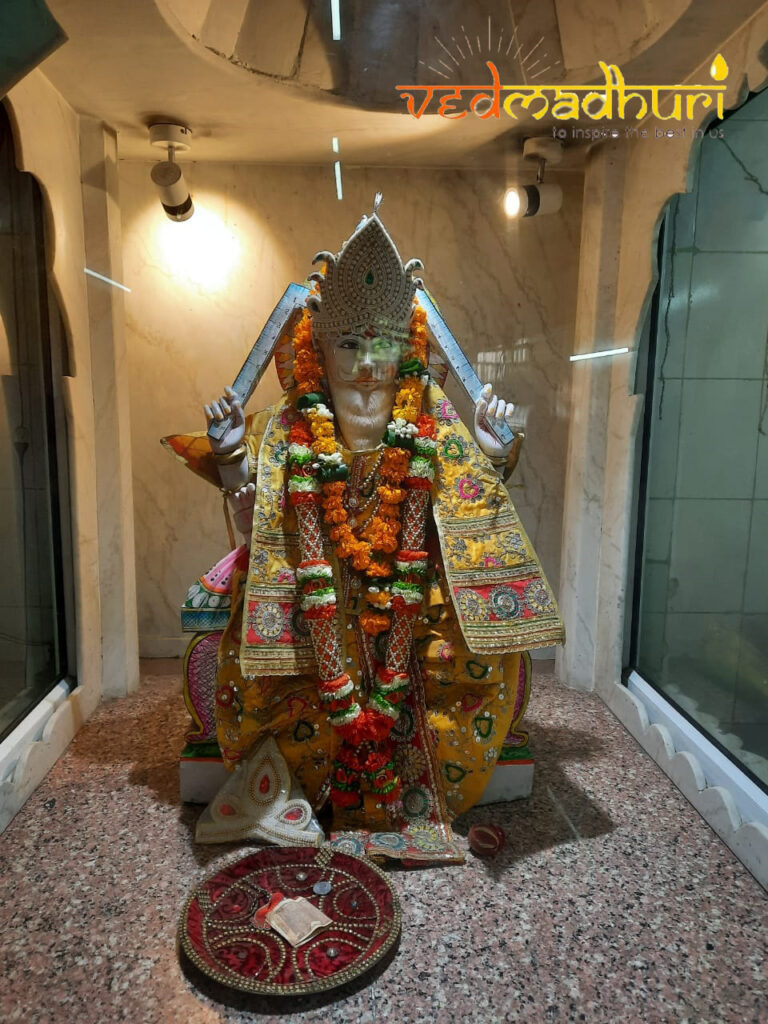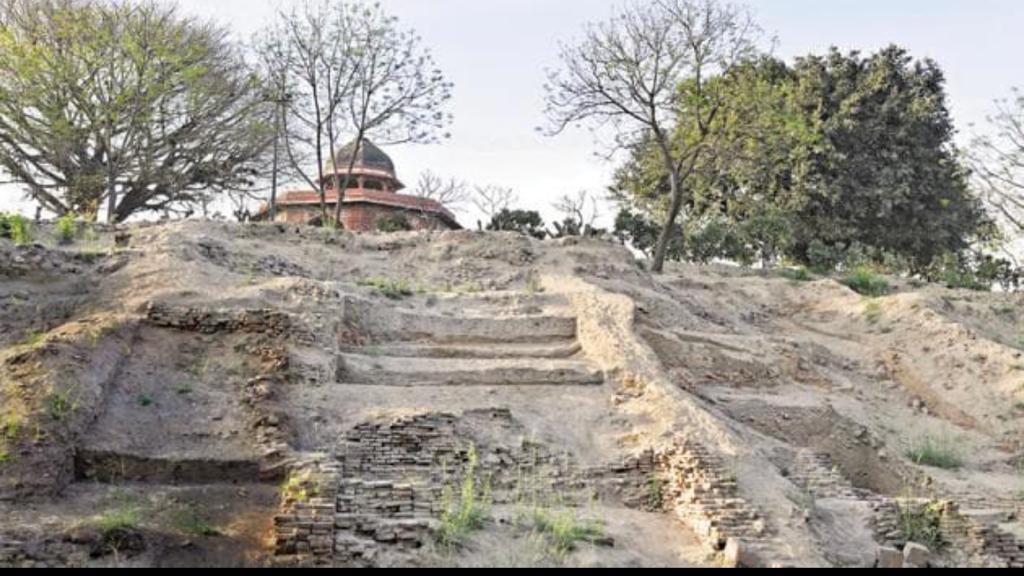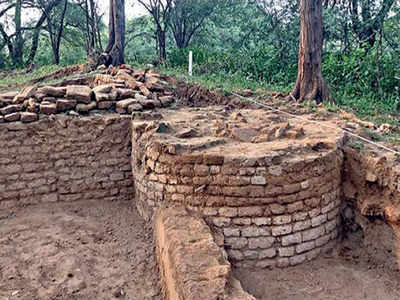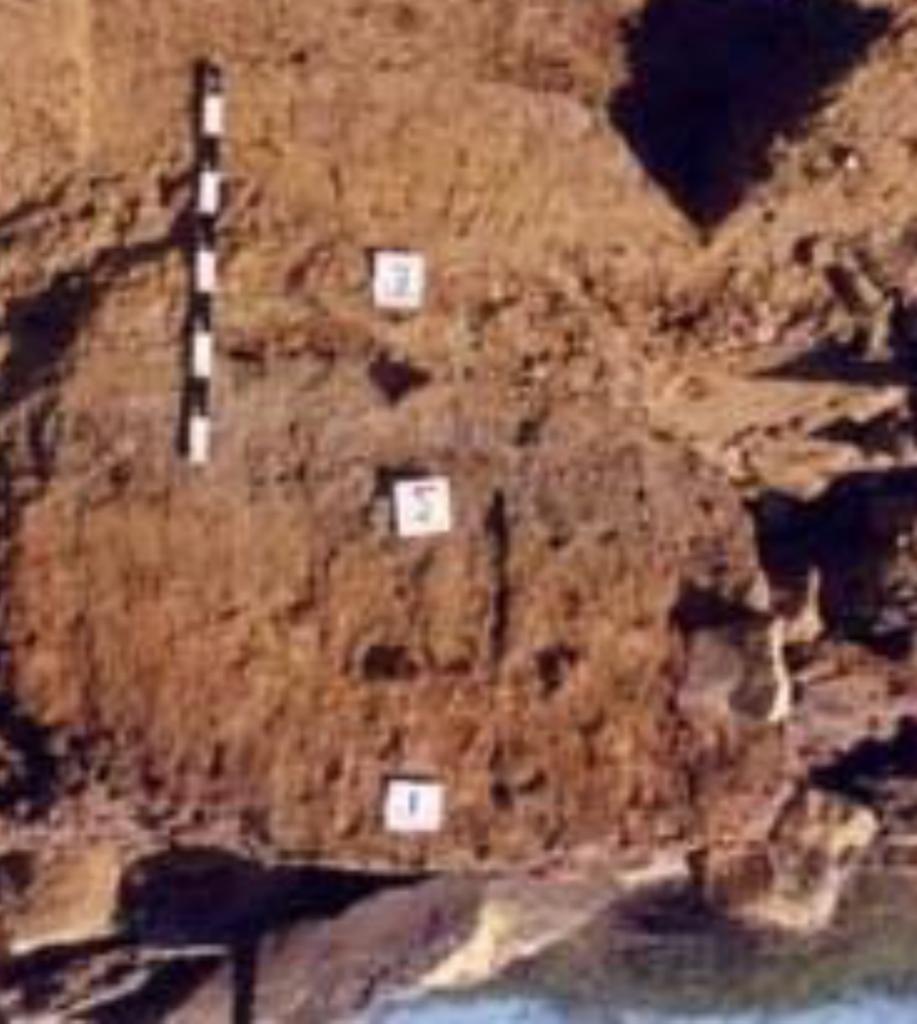
Absract: Vishvakarma is regarded as the architect among gods in the Sanatana Vedic pantheon. He exists in the Vedas as a solar deity and later came to be regarded as the Prajapati, the creator, in the Brahmanas. Vishvakarma obtained the status of the ‘divine architect and the divine armourer’ in the Epics and the Puranas. In the much debated Varna system, the descent of various castes indulging in craftsmanship is believed to be the progeny of Vishvakarma. Even though cities, equipment and weapons in the modern realm are strikingly different from the mythological ones described in our ancient texts and as the present and the status and position of artisans and service castes is undergoing a sociological change in the present globalized ambience, the myth of Vishvakarma has not its relevance.
Vishvakarma means the Creator of the World.
The RgVeda dedicates two hymns in the tenth book (Hymn 81 and 82) to Lord Vishvakarma.या ते धामानि परमाणि यावमा या मध्यमा विश्वकर्मन्नुतेमा। शिक्षा सखिभ्यो हविषि स्वधावः स्वयं यजस्व तन्वं वृधानः।। [RgVeda X.81.5] Here Vushvakarma, is regarded as the maker of houses (dhAma) in three categories (the superior-most, mid-most and the lowest) and invoked as the Self-sustaining deity at the ‘svadha sacrifice’ to educate the welcoming worshippers:
विश्वकर्मा विमना आद्विहाया धाता विधाता परमोत संदृक्। तेषामिष्टानि समिषा मदन्ति यत्रा सप्तऋषीन्पर एकमाहुः।। [RgVeda X.82.2]Here, Lord Vishvakarma is called the Omniscient, the Maker (vidhAtA) and Sustainer (dhAtA) and the Supreme Overseer (saMdRk) , One, and the only One, beyond the Seven Rsis who may be propitiated with the essence of grain.
The RgVedic description of Vishvakarma is suggestive of a human origin of the divinity because ‘svadha’ is always used in a reference to ancestral rites in the Ṛg-Veda. The Veda organized their worlds according to conceptions that are not separate from the process of creation and production. The artisans were regarded as the creators of objects that are permeated with aesthetic value. The special creative skills of those people earned them the status of divinity. The actions of building a house evolved into building the Cosmic House, called ‘vishva’ in Sanskrit, and hence, the name of ‘Vishvakarma’.
Two other RgVedic gods Tvashtar and Rbhus were also divine workmen. The god Tvashtar is the skilful carpenter-god, who, in particular manufactured with his hatchet the thunderbolt of Indra [Rig-veda, 10.110.9] and Rbhus, the children of sudhanvan (good archer), made a single chalice to be fourfold by their dexterity and skill as craftsmen [Rig-veda, 4.34.9]
In the Brahmana layer of the Vedic literature, Lord Vishvakarma was universally designated as ‘VidhatR Prajapati’, that is, the Creator and the Progenitor. This period corresponds to the earliest phase of urbanization in India. From the sacrificial altars, carts, and agricultural implements, the artisans were now engaged in a large-scale construction of townships and manufacturing of chariots, weaponry, etc. for the royal army besides so many other equipments for making articles for daily use of the common people. The civilization flourished because of the class of the craftsmen who skilfully made these things with due principle (Hence, called vidhAtA) and no wonder, they were regarded as the progenitors or the Masters of the peoples (prajA-pati). The role of Tvashtar and Rbhus was subsumed in the persona of Vishvakarma.
In Ramayana, Vishvakarma is credited of founding the city of Lanka for the demons descending from Sukesha [R VI.6.22-27] which later on became the capital of demon king Ravana. In the Southern recension of Mahabharata, Indraprastha, the capital of King Yudhishthira [Mb. I.199.1927] is stated to be built by Vishvakarma. The Bhagavata Purana credits Vishvakarma for building up Hastinapura, the capital of Pandavas after the Great war [ BP 10.58.24] and also Dwarka, the capital city of Lord Krishna [BP 10.50].
The Epic-Puranic period corresponds to well established townships in India. The mythological association of Vishvakarma with some of these very ancient towns in India is supported by archeological evidence. For example, the first excavation of Indraprastha mounted under the supervision of renowned archaeologist B.B. Lal in 1954, when painted grey wares were discovered from the site at Purana Quila in Delhi. It has had continuous cultural deposit from the Mauryan to the Mughal period. The discoveries have reiterated the fact that there has always been habitation here during the Gupta and Kushana period.

The first excavation at Hastinapur goes back to 1952, when the renowned archeologist discovered articles belonging to 900 BCE and concluded that Hastinapura was a flourishing city that was washed away by a flooded Ganga. In 2020, pottery dating back to the 3rd century BCE was discovered at Hastinapur mound after incessant rain. The design of pottery was identical to the findings at Ahichchhatra, an ancient mound at Aonla in Bareilly district which was called Ahichhatra, the capital of the Panchala Kingdom in the Mahabharata period. Archeological survey has taken up fresh excavations at Hastinapura now.

Between 1983 and 1990 the archaeologists discovered a fortified foundation on which the ancient city walls of Dwarka were discovered and it was inferred that the city must have been built along the river banks. Stone blocks used for the construction, pillars and irrigation systems were found and the dating of the vestiges, from 3 000 to 1 500 years BC has been fixed by many scholars

In the Epics and Puranas Vishvakarma is credited with the making of legendary weapons of Gods, such as the vajra (thunderbolt) of Indra, Sudarshana Chakra of Lord Vishnu, and the chariot of Lord Shiva which he mounted upon while fighting the demon Tripurasura. The myth of Vritrasura, a son of Vishvakarma, has been carried forward from the Vedas to Mahabharata and hints at the power of creation of human mind, which unbridled can lead to Weapons of Mass Destruction!
The Gita used the cardinal principle in Chapter 18 verse 45:स्वे स्वे कर्मण्यभिरतः संसिद्धिं लभते नरः। That means, each one indulging in his individual profession attains perfection.
This principle leads people to indulge in family trade and evolve their skills to a level of perfection through generations of practice and by maintaining the secrets and standards of their art and craft . The worshippers of Vishvakarma over a period of time were seen as belonging to several castes known by their craftsmanship. The Puranas incorporated this natural sociological change in their corpus as a new myth. For example, the Brahma Vaivarta Purana goes on to say that Vishvakarma, a Brahmin was married to a milkmaid and their progeny comprising of the blacksmith, the potter, the carpenter, the tailor, the goldsmith, the weaver, and so on began to call themselves as the descendants of Lord Vishvakarma.
The mythology of Sanatana Vedic Dharma has a distinct element of history in it and the myth of Vishvakarma is historically concerned with the two changes in our great civilization: urbanization and formation of identities among Artisanal groups. The solar deity Vishvakarma was adopted by the artisans and craftsmen as their cherished god.
